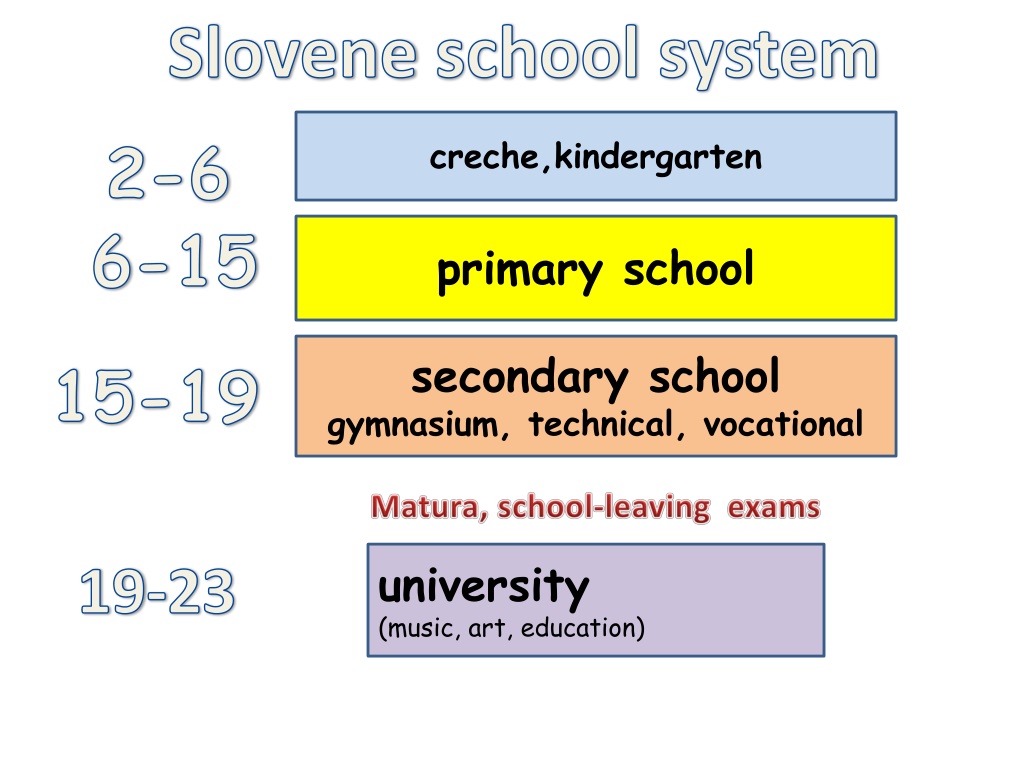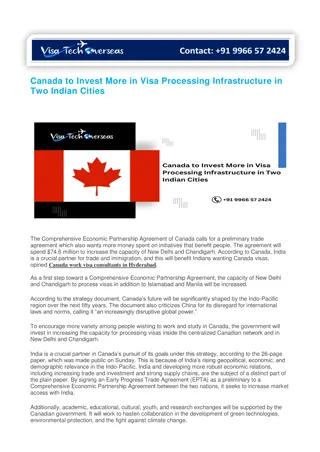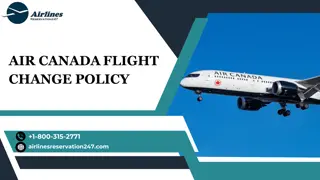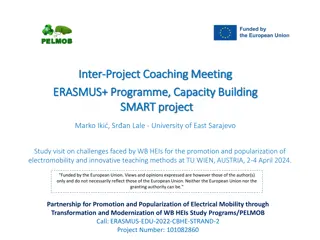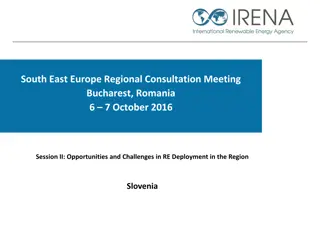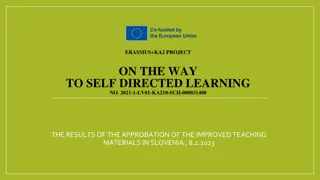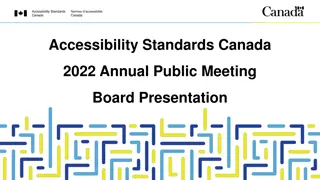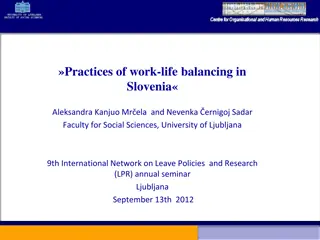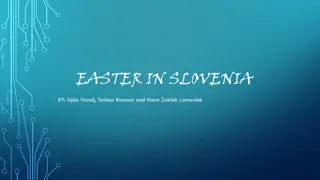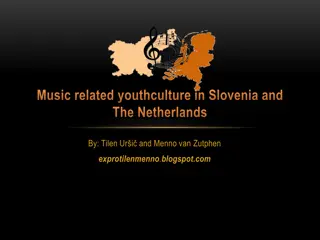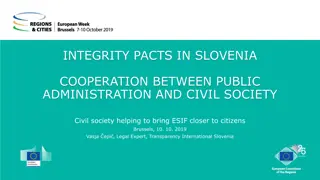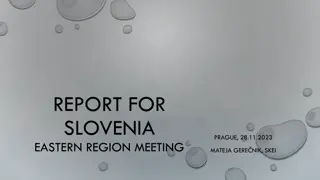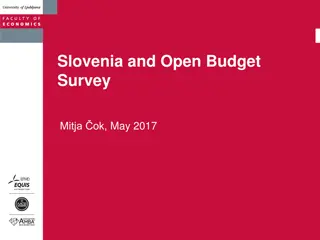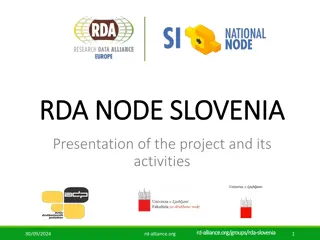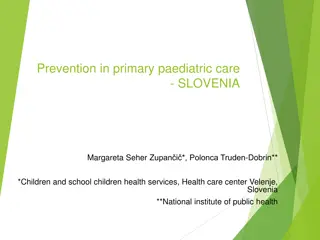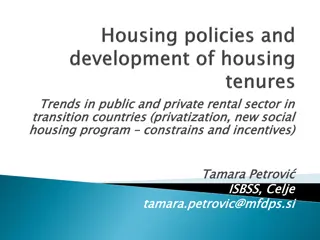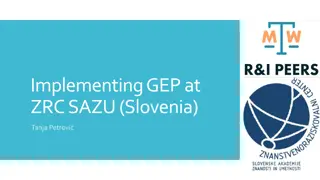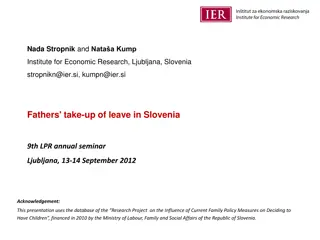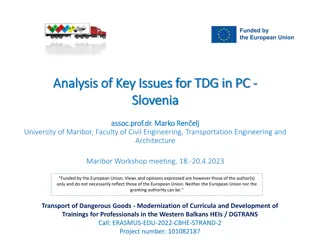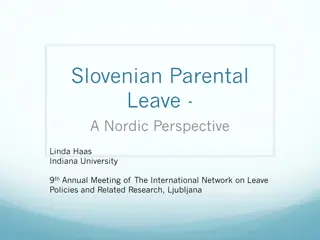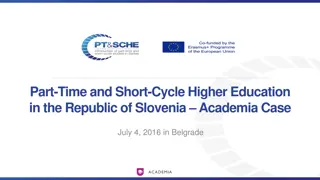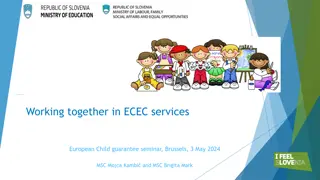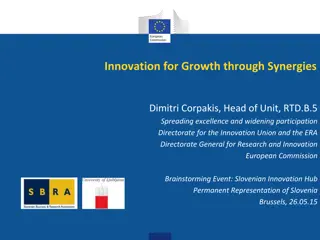Understanding the School Systems in Slovenia and Canada
The education systems in Slovenia and Canada differ in structure and language of instruction. In Slovenia, children attend creche, kindergarten, primary school, secondary school, and then various specialized tracks like gymnasium, technical or vocational training, before going to university. In contrast, most children in Canada attend public schools, with English or French as the primary languages of instruction. Religious education varies between the two countries, with Slovenia offering different tracks for faith-based education.
Download Presentation

Please find below an Image/Link to download the presentation.
The content on the website is provided AS IS for your information and personal use only. It may not be sold, licensed, or shared on other websites without obtaining consent from the author. Download presentation by click this link. If you encounter any issues during the download, it is possible that the publisher has removed the file from their server.
E N D
Presentation Transcript
Slovene school system 2-6 6-15 creche,kindergarten primary school secondary school gymnasium, technical, vocational 15-19 university (music, art, education) 19-23
Most children attend elementary school and then high school. Usually, children enter high school at about age 13 or 14. Some school systems have middle schools that children attend for two years before they enter high school. Children between six and 16 must attend school and most of them go to public schools. In elementary and high school, classes usually start in early September and end in late June.
There is usually a two-week vacation in December and a one-week vacation in either February or March. Children attend school Monday to Friday, for about six hours a day. They usually bring their lunch to school, but sometimes return home for lunch if they live close to their school.
Pre-school (optional): age 4 5 Kindergarten: age 5 Elementary School: Grades 1 6 (age 6 11) Middle / Junior High School: Grades 7 9 (age 12 14) High School: Grades 10 12 (age 15 17 / 18)
Most children in Canada attend public schools, although some attend private schools. Public schools do not charge school fees for children to attend and private schools do charge fees. Boys and girls share classrooms and are taught together in most public schools. Teachers must be qualified and licensed to teach in the classroom. All academic teachers have at least one university degree and special training in education.
The language of instruction in Canada is either English or French. If a student has difficulty in these languages, additional language training is usually available. In Quebec, almost all children must attend French-language schools.
A large number of religions are practiced in Canada. For this reason, religion does not play an active role in most regular public schools. Public schools usually teach children about the different religions of the world instead of providing instruction in one religion. In some provinces, faith-based schools are available within the public school system. And there are many faith-based private school across Canada.
Children often take school buses (provided by the school at little or no cost to parents) or public transportation to get them from home to school and back.
Report cards tell you how your child is performing in school. Depending on the province or territory in which you live, your child will receive a report card three to four times a year.
Extra-curricular activities are activities that take place outside of school hours before school, after school or during lunch. These activities may include sports, hobbies, travel, leadership, arts or volunteer work.
School boards govern the work of public schools from nursery school to high school. Each public school in Canada belongs to a school board. Each private school decides on its own how it will run.
School board trustees are people elected to set policies about how public schools will operate. Trustees hold meetings with the public to tell them of any plans that concern the schools. At these meetings, community members are welcome to voice their concerns about the school, the public school system or anything else about their children s education.
College: community college, technical school, applied arts, applied science school (certificates, diplomas, associate degrees, bachelor s degrees...) University: undergraduate and postgraguate education (academic degrees in a variety of subjects) Graduate School: academic certificates, diplomas and degrees (i.e. Master s Degree, Ph. D)
http://www.cic.gc.ca/english/newcomers/be fore-education-schools.asp http://www.cic.gc.ca/english/newcomers/be fore-education-classroom.asp
British school system 2-5 5-11 creche,nursery school primary school 11-16 secondary school 16-18 Preparing for university College of further education (technical) A-level exams university/college(music, art, education) 18-22/23
American school system 2-5 6-11 nursery school, kindergarten elementary school 11-16 junior high senior high 16-18 university/college 18-22/23
state schools : public/independent schools comprehensive, grammar school single-sex schools co-educational schools boarding schools,campus grant/scholarship + loan obligatory/compulsory/mandatory education electives tuition/course fee you graduate from high school if you have enough units(e.g. 120 hours of classes) a degree (if you have enough credits) Expressions
